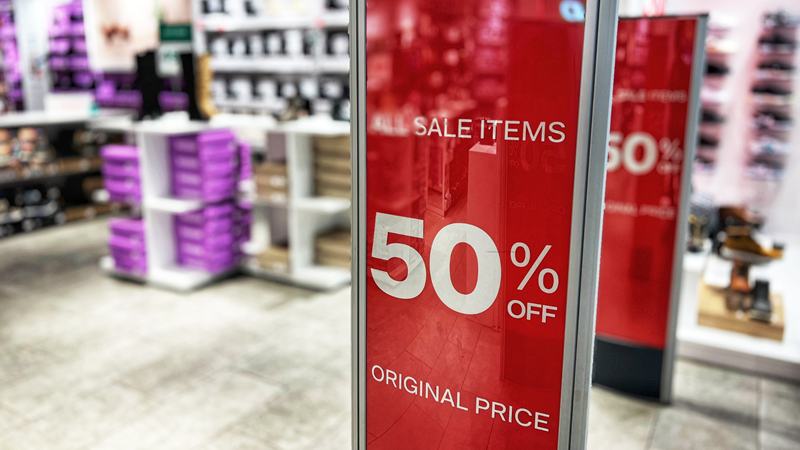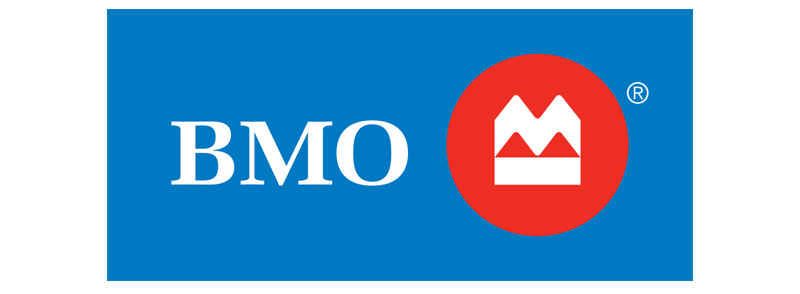Same, same, but different
While my time at Ethnicity Matters has come to an end, upon reflection on my time, I wanted to share a bit of what I learned.
I have worked in advertising and marketing for almost 30 years, and something I quickly learned was that multicultural advertising and marketing follows all of the same fundamentals – why wouldn’t it? What it also does, is open up opportunities for brands to be more thoughtful, authentic and welcoming to an audience often not spoken to directly. As with all great work, multicultural ideas are rooted in strategy and data with long-term approaches for brand success. So why is multicultural marketing so hard for so many brands and agencies to put on their annual plans and budgets? Part is unknown, part is measurement, part is sadly that it’s often an afterthought versus baked in from the onset.
Everyone knows that we are a multicultural country, but the majority of work is still targeted towards a traditional “mainstream” audience.
With so much in the headlines now about immigration, there is a lot of misinformation that is not helping to unify this industry on the importance of winning the hearts and minds of Canadian ethnic audiences.
While the government is rightsizing at the moment, immigration is still our plan for population growth. And that means it should be part of any brand's plans for growth.
The facts
In Canada, we are an aging population that has fewer babies. Without immigration, our infrastructure falls apart. Immigration is imperative for the country, as we are at historic lows of 1.26 babies per household born in Canada. To sustain the population through natural growth rate, we need that level to be 2.1 children per family. This has been on a steady decline for the last decade.
Today, one in four Canadians are foreign born, and that number is expected to become one in three by 2041. We are still looking at welcoming two million newcomers every year. A sizable percentage of the Canadian population will be visible minorities. It really is time to factor in these audiences, since they are the long-term growth potential.
Your new growth strategy
Many brands are experiencing declines in household penetration that they had not fully anticipated. Trends are often based on many factors, however the changing population – while perhaps considered – was not then conversely reflected in the growth opportunity, plans and budgets.
Declines are across industries from CPG to retail to automotive, because of many factors like changes in consumer behaviours, increased competition, and access to everything imaginable on your mobile. The reality is, there are large numbers of people in Canada that did not grow up with many of these “iconic” brands, habits or way of life.
Brands have spent decades being part of the “mainstream” Canadian culture and audience's lives, homes and habits, and a number of these same brands have no relevance or resonance with many multicultural Canadians. For these multicultural audiences, brands need to consider how to best invest in creating awareness and affinity with these ethnic consumers that have not grown up with specific products or brands, and campaigns.
Most importantly, this is not just about population numbers; this is about purchasing power. Many of these ethnic consumers and new Canadians are more affluent, younger, highly educated and have larger families. They are building a life, creating new habits and navigating their new home and the many different things it has to offer. From condiments to sports, there are so many undiscovered options they have yet to be introduced to.
The more you know
Understanding who your message is reaching, resonating or speaking to should look beyond the “mainstream” you have always spoken to. Tone, humour, sarcasm and other “clever” messages can often fall flat for many multicultural consumers as they don’t have the context or are simply not in on the joke.
For many ethnic consumers, their lifestyle and way of living revolves around their families. They have often moved generations of family across the world for new opportunities. It is all for the family, and for many cultures, religion is included as a core value.
What to consider when targeting ethnic audiences:
- Language: While most multicultural audiences speak and understand English, it is not the preferred language at home, in communication, or for entertainment and social. Brands that speak to audiences in their preferred language have proven stronger resonance.
- Days of significance: Traditions and celebrations have many meanings and levels of importance, so understanding the nuances in each is critical. Keep in mind that some of these are not for brand participation – but a brand acknowledgement is important.
- Unique media habits: Understanding how audiences engage is key. From WhatsApp, WeChat and Little Red Book to AliPay, there are many different apps that ethnic consumers are using.
- The role of influencers: Influencers globally are far more important than they are here in Canada. In Canada, only 10 per cent of consumers have a positive association with brands that engage influencers (23 per cent in China, 30 per cent in India, and 44 per cent in the Philippines).
It is also important to understand where people are in their immigrant journey. No matter where in the journey they are, it’s that sense of belonging that’s key. Essentially, there are many ways to reach these ethnic audiences when we understand their habits, preferences and influences. Brands that know this, and work to meet them at various stages, will win a new consumer.
Make it count for all
Making it count for everyone matters. While it may sound cliche, people are people. Ethnic consumers’ habits and choices are based inherently on their experiences and preferences – from the food they eat, the music and movies they love, the clothes they wear, to how they cook and clean.
When it comes to engaging with a multicultural audience, it’s about passion points and looking to the things that matter to them. You must understand if your product is right for that audience.
There have been many shifts in “mainstream” over the last few years with the emergence of many cultural influences moving into “mainstream.”
Food
We have seen extensive offerings at restaurants, QSR and grocery. We have seen flavours like curry, sriracha, jerk in everything from chips to sauce and seasonings. Brands like Pringles introduced flavours from around the world to the Canadian market, and A&W launched flavours to specifically target South Asian audiences based on the demand for the right kind of vegetarian option. We have also seen the rise of retailer expansions like Chalo Freshco, which literally translates to “Hello Freshco,” welcoming South Asian community members into the store.
Music
We see global artists on mainstream charts, radio stations, and Hockey Night in Canada broadcasts. The rise of Punjabi music has taken on a movement in Canada, with some referring to Brampton as the ‘Nashville of Punjabi Music,’ with three Canadian Punjabi artists on the top five of music charts back in India. While the Junos added a South Asian music category, it also had many of the Punjabi artists nominated in the mainstream categories. The Rogers Centre sold out Diljit Dosanjh, and he had sold out shows across the country as well.
Sport
The rise of soccer and cricket holding global tournaments in Canada is indicative of the audience and demand for the sports to be more embedded. Cricket is now the fastest growing sport in Canada – and that’s to do with the South Asian and Afro Caribbean influences in Canada. We see brands like BMO understanding the relevance and importance of making Rohit Sharma, Team Canada Captain, their spokesperson. Further, brands like A&W, Nissan and TD are key sponsors for the Canadian Cricket Team.
Community
The community that new Canadians often build is rooted in family, food, music and sports. When they celebrate, it’s big, fun and always positive. We see festivals celebrating specific days of significance like Diwali and Mid-Autumn Festival. Nintendo and Chivas Regal joined this year's Diwali Festival of Lights at Nathan Phillips Square as sponsors, along with A&W and Kruger Canada.
More and more brands are recognizing the importance of speaking to, engaging with and marketing to multicultural audiences.
The key is to understand values, habits, passions, what’s important, and what drives interest and loyalty to a brand. It involves the same strategic development and way of targeting that you would use for any target audience, but finding different ways in.
Demonstrating the commitment
For many brands, it may be difficult to know where to start when considering sponsoring programs and communities. Looking at your current brand platform and staying on brand is the most authentic way to expand sponsorship commitments.
A great example is TD Bank. TD has always been known for sponsorships like the Toronto Blue Jays, annual Jazz Festivals, and other large mainstream festivals. To reach multicultural audiences, it has stayed true to its commitments to music, arts and communities and added to its sponsorship portfolio.
In addition, TD looks at its existing programs, such as the sponsorship with the Toronto Blue Jays. TD added to its existing commitment by supporting the “Cricket Day at the Park,” hosted to show the similarities to the beloved game of cricket.
Today, the company sponsors many multicultural festivals across the country like the DesiFest, Pan-Asian Festival, Filipino Street Festivals, and are now a name sponsor for Cricket Canada, with presence not only on-site but also on jerseys.
TD is using its platform to support arts, music and communities and expanding its commitment to new audiences, festivals and communities that matter to all Canadians.
Final thoughts
If it is truly about your brand's growth and longevity in the Canadian market, you need to target all Canadians as part of your sponsorship strategy – mainstream, new and those who haven’t arrived yet. It’s important to build it into your plans from the onset.
Your understanding and participation will ensure engagement that is authentic, relevant and creates loyalty and resonance for future generations.
Consider participating in ethnic festivals that are focused on the holidays, food, sports and music, because by doing so, you will create:
- Cultural connection: Celebrating ethnic holidays allows brands to connect with the traditions, and the community celebrating their heritage.
- Integration for newcomers: These celebrations help newcomers feel more welcomed and integrated into Canadian society by providing a platform to share their cultural beliefs and practices.
- Show appreciation: By participating in different ethnic holidays, brands foster mutual respect and understanding of cultural differences and traditions.
- Community building: Ethnic holidays often bring people together from different backgrounds, creating opportunities for social interaction and building stronger communities.
- National identity: Canada prides itself on its multiculturalism, and ethnic holidays that represent diversity and celebration. Brands that participate demonstrate their support, pride and appreciation.
Canada is changing, and your brand strategy should reflect that. To be a proud Canadian means to be an inclusive Canadian.
Sources:
Source: Statistics Canada, Crude Birth Rate, 2023 CBC Canada records its lowest fertility rate for 2nd year: StatsCan
Source: Statistics Canada, Population Projections on Immigration and Diversity for Canada and its Regions, 2022
Source: Statscan, Notice – Supplementary Information for the 2025-2027 Immigration Levels Plan
Source: Vividata, Winter Study, 2024, +18
50% of the Gen Z (born 1996-2012) population in Canada are visible minorities. (Source: Vividata Fall 2024)



































